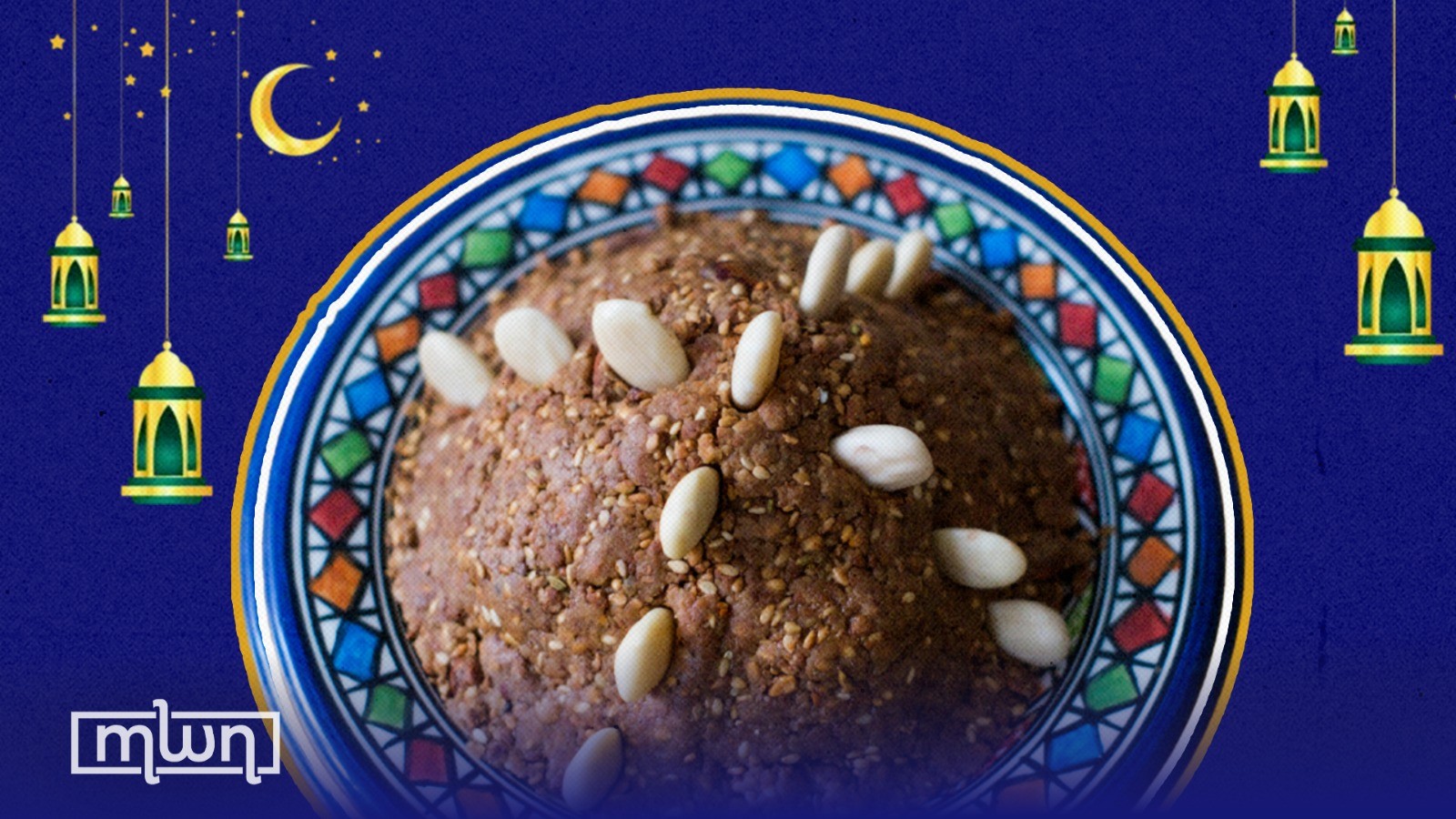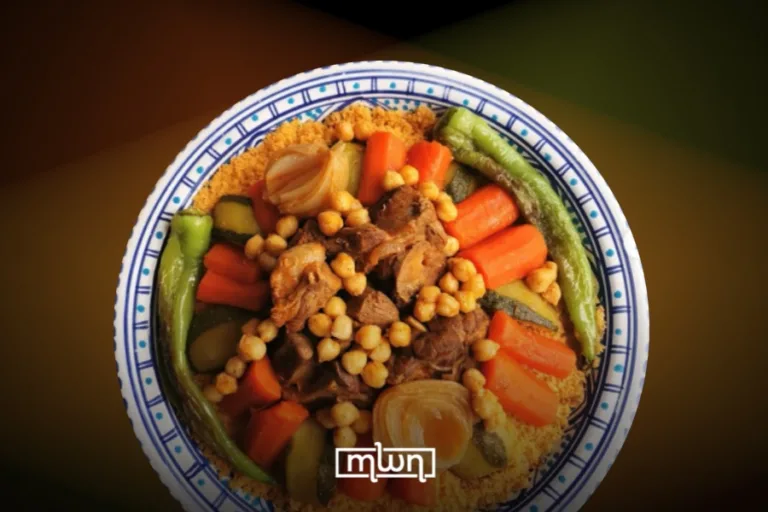Doha – More than a week since the holy month of Ramadan descended upon Morocco, families across the country continue to eagerly uphold cherished traditions passed down through generations. Chief among these is the preparation and enjoyment of “sellou,” a delectable confection as integral to Ramadan in Morocco as dates and prayers.
Known variously as “sfouf” or “zmita” depending on the region, sellou is a rich nutty delicacy made from a blend of browned flour, ground fried almonds, toasted sesame seeds, and spices like anise, cinnamon and gum arabic. Bound together with honey and butter or oil, its sandy texture and warming flavors have been delighting Moroccan palates for centuries.
A taste of history
Sellou’s origins stretch back to the 12th century, when the renowned geographer and historian Abu Abdullah al-Idrisi described, in his book “Nuzhat al-Mushtaq fi’khtiraq al-Afaq,” a similar dish enjoyed by the Amazigh (Berber) Sanhaja people, founders of the Almoravid dynasty that ruled Morocco and parts of Spain. Even then it was prized as an energizing, nutritious food – Al-Idrisi noted that a handful of sellou eaten with milk could sustain a person for an entire day.
The very name “sellou” comes from the Amazigh word “islli,” meaning to toast or fry something over a fire, referring to the browning of the flour and almonds that is key to its flavor. Over time, the confection spread throughout Morocco, taking on different regional variations but always maintaining those core ingredients and its association with celebration and sustenance.
According to some accounts, sellou was originally conceived as a convenient and nutritious food for pilgrims journeying to the holy lands, despite its current strong association with the month of Ramadan. The dish was prized for its high content of energizing nutrients and its ease of storage, making it well-suited for long travels. Over time, sellou became a staple of the Ramadan table, but its origins may lie in providing sustenance for those undertaking the pilgrimage to Mecca.
A labor of love
Indeed, making sellou is no casual undertaking. Home cooks often prepare enormous batches during Ramadan, enough to last the entire family throughout the month and share with neighbors and guests. It’s not uncommon for a single household to make 10-20 kilograms at a time!
The process begins days in advance. Almonds are fried in oil until golden brown and fragrant. Unhulled sesame seeds are toasted until nutty and crunchy. Flour is browned slowly in the oven, transforming from beige to a deep caramel color. These elements are then ground or crushed to a sandy powder before being combined in a massive bowl or basin.
Ground anise, cinnamon, gum arabic, and mastic gum are added to the mixture for flavor, aroma and binding. Finally, warm honey and clarified butter (or olive oil for a healthier version) are incorporated little by little, until the sellou reaches the desired texture – crumbly and powdery or more moist and packable, as preferred. It’s formed into cones, rounds, squares, or balls before being garnished with fried almonds and stored in airtight containers.
Ramadan nights, sellou delights
That labor is rewarded each night of Ramadan when sellou takes pride of place on the iftar table. Many families enjoy it alongside a glass of fresh mint tea as a tasty and satisfying way to break the fast. Its complex carbohydrates, healthy fats, and minerals offer a much-needed energy boost after a long day of fasting.
Beyond providing sustenance, sellou also serves an important social function during Ramadan. Visiting friends and family during the holy month is an essential way of strengthening community bonds, and sellou is the consummate symbol of Ramadan hospitality.
Sellou’s reach extends even beyond home visits. Many Moroccans make a point of sharing their sellou creations with those in need, distributing boxes of it to the poor and to charity organizations. It’s a poignant way of ensuring that everyone in the community can partake in the joyous Ramadan spirit.
Sellou is often consumed during iftar, the meal eaten to break the fast at sunset. However, some people prefer to have it during suhoor, the pre-dawn meal, to benefit from its fortifying ingredients and maintain their energy throughout a long day of fasting.
Variations on a theme
While sellou’s key components remain largely consistent across Morocco, different regions have developed their own signature tweaks and additions over the centuries.
Sellou, also known as “slilo” or “sfouf,” typically includes roasted white or wheat flour as a main ingredient alongside the basic nuts and spices. “Tqawt,” on the other hand, is a flourless version of sellou that maintains the same basic ingredients minus the roasted flour.
In the southern Souss region, “zmita” or “toummette” comes in both sweet and savory variations. The sweet version combines roasted barley flour with argan oil, pure honey, and a pinch of salt, resulting in a crumbly consistency. The savory version calls for boiled water, salt, and argan oil or pure olive oil when argan oil is unavailable or too expensive.
In Meknes and Taza, zmita refers to the sellou variation known in Casablanca, Fez, and Rabat, with the Meknassi variation including toasted peanuts along with other special regional ingredients.
Oujda boasts its own unique sellou variation called “taquenta,” which is easy to make and primarily consists of flour browned with salt and oil, sweetened with honey.
In recent years, health-conscious Moroccans have begun experimenting with sellou recipes to create guilt-free indulgences. Substituting whole wheat or oat flour for refined flour, using honey instead of sugar, and incorporating nutrient-rich oils like argan oil have become popular ways to enjoy the traditional flavors of sellou while prioritizing health and well-being.
Read also: How to Make Moroccan Sellou
From cradle to celebration
Ramadan may be the prime sellou season, but the confection also makes star appearances at other major life events.
Sellou is often served at weddings and engagement parties as a symbol of hospitality and shared joy. Large batches are prepared for the ‘aqiqah’ celebration marking the birth of a child, where it is thought to help the nursing mother regain her strength.
Some expectant mothers even make sellou in advance of their due dates, freezing large containers of it to have on hand for the influx of well-wishers they know will come to welcome the baby. It’s a tasty and practical way of extending hospitality without overburdening a recovering mother.
As Moroccans gather around their tables this Ramadan, the presence of sellou serves as a reminder of the rich culinary heritage and the enduring bonds of family and community.
Whether enjoyed as a sweet ending to a hearty iftar meal or savored as a midday treat, sellou remains a cherished emblem of Moroccan hospitality and a testament to the enduring traditions that unite generations.
So, as you break your fast this Ramadan, take a moment to relish the timeless flavors of sellou and reflect upon the centuries of history and love baked into every bite.
















